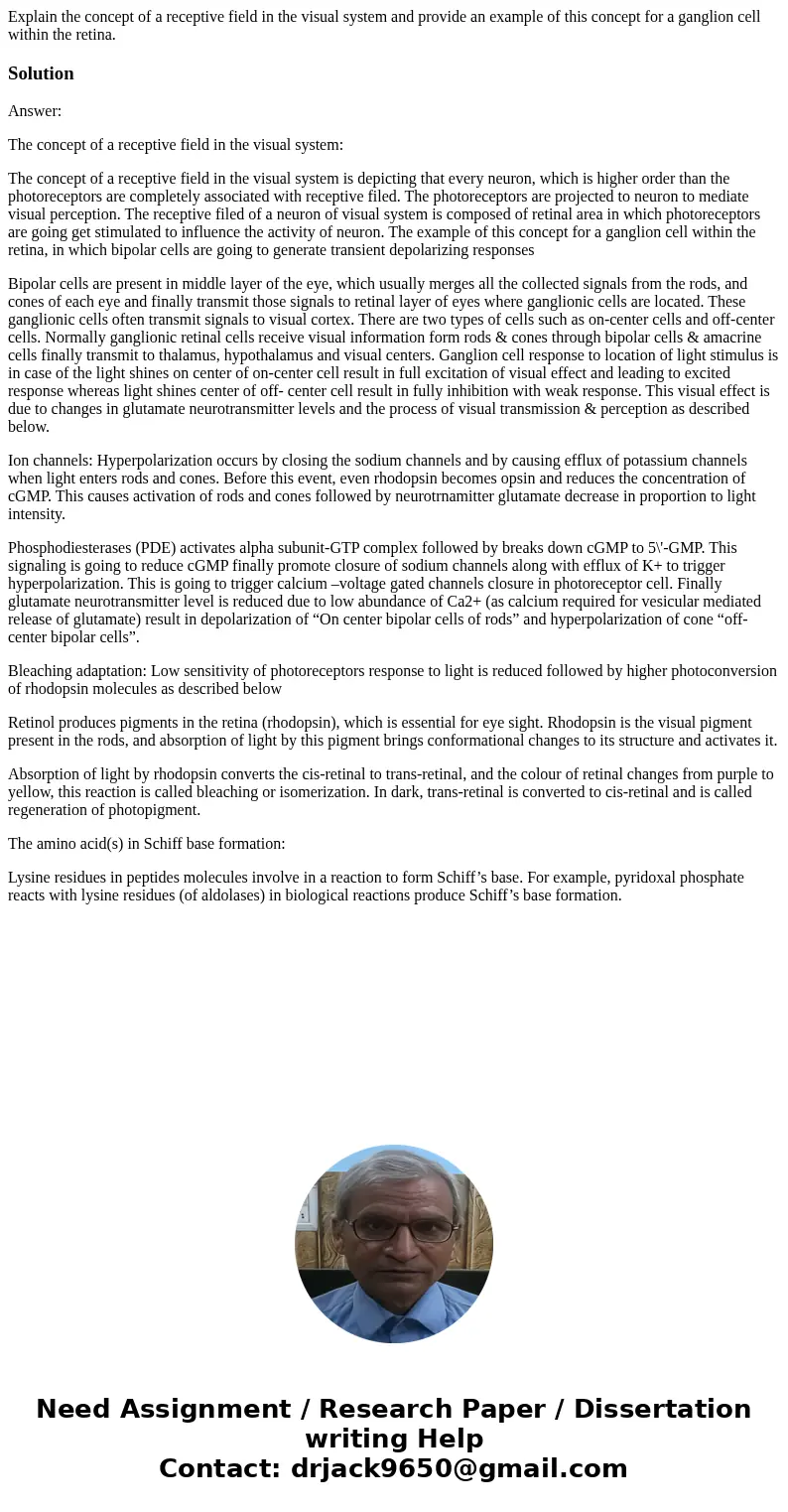Explain the concept of a receptive field in the visual syste
Explain the concept of a receptive field in the visual system and provide an example of this concept for a ganglion cell within the retina.
Solution
Answer:
The concept of a receptive field in the visual system:
The concept of a receptive field in the visual system is depicting that every neuron, which is higher order than the photoreceptors are completely associated with receptive filed. The photoreceptors are projected to neuron to mediate visual perception. The receptive filed of a neuron of visual system is composed of retinal area in which photoreceptors are going get stimulated to influence the activity of neuron. The example of this concept for a ganglion cell within the retina, in which bipolar cells are going to generate transient depolarizing responses
Bipolar cells are present in middle layer of the eye, which usually merges all the collected signals from the rods, and cones of each eye and finally transmit those signals to retinal layer of eyes where ganglionic cells are located. These ganglionic cells often transmit signals to visual cortex. There are two types of cells such as on-center cells and off-center cells. Normally ganglionic retinal cells receive visual information form rods & cones through bipolar cells & amacrine cells finally transmit to thalamus, hypothalamus and visual centers. Ganglion cell response to location of light stimulus is in case of the light shines on center of on-center cell result in full excitation of visual effect and leading to excited response whereas light shines center of off- center cell result in fully inhibition with weak response. This visual effect is due to changes in glutamate neurotransmitter levels and the process of visual transmission & perception as described below.
Ion channels: Hyperpolarization occurs by closing the sodium channels and by causing efflux of potassium channels when light enters rods and cones. Before this event, even rhodopsin becomes opsin and reduces the concentration of cGMP. This causes activation of rods and cones followed by neurotrnamitter glutamate decrease in proportion to light intensity.
Phosphodiesterases (PDE) activates alpha subunit-GTP complex followed by breaks down cGMP to 5\'-GMP. This signaling is going to reduce cGMP finally promote closure of sodium channels along with efflux of K+ to trigger hyperpolarization. This is going to trigger calcium –voltage gated channels closure in photoreceptor cell. Finally glutamate neurotransmitter level is reduced due to low abundance of Ca2+ (as calcium required for vesicular mediated release of glutamate) result in depolarization of “On center bipolar cells of rods” and hyperpolarization of cone “off-center bipolar cells”.
Bleaching adaptation: Low sensitivity of photoreceptors response to light is reduced followed by higher photoconversion of rhodopsin molecules as described below
Retinol produces pigments in the retina (rhodopsin), which is essential for eye sight. Rhodopsin is the visual pigment present in the rods, and absorption of light by this pigment brings conformational changes to its structure and activates it.
Absorption of light by rhodopsin converts the cis-retinal to trans-retinal, and the colour of retinal changes from purple to yellow, this reaction is called bleaching or isomerization. In dark, trans-retinal is converted to cis-retinal and is called regeneration of photopigment.
The amino acid(s) in Schiff base formation:
Lysine residues in peptides molecules involve in a reaction to form Schiff’s base. For example, pyridoxal phosphate reacts with lysine residues (of aldolases) in biological reactions produce Schiff’s base formation.

 Homework Sourse
Homework Sourse